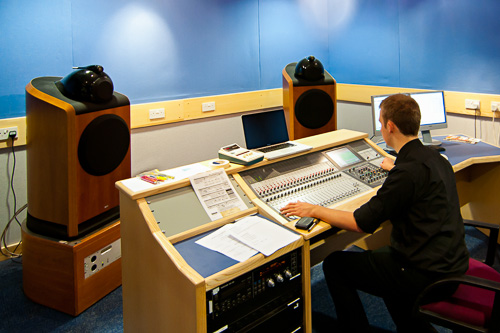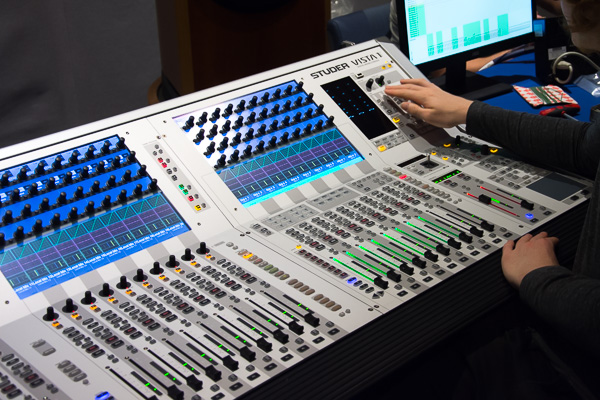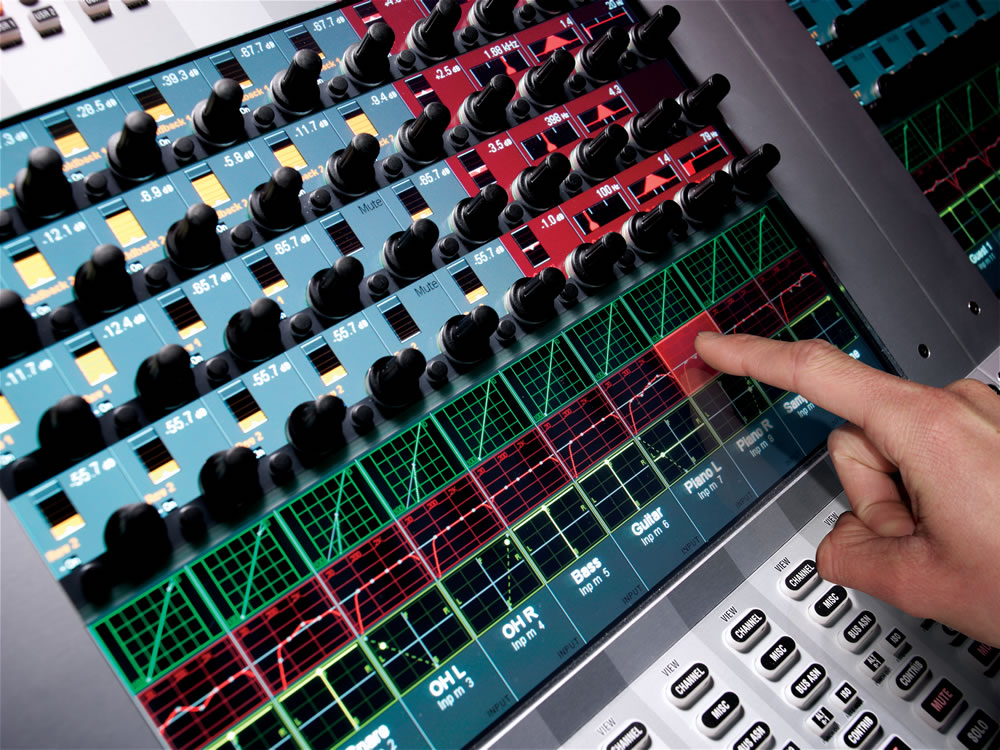IoSR Blog : 12 September 2017
Studio 1 upgrade, part 2
As mentioned in the previous post, we have a rolling programme for upgrading our studios to keep them professionally relevant. This year we're refurbishing Studio 1, our classical recording studio, and a key part of this is replacing the Sony DMX-R100 console.

The last post gave an overview of what the studio is used for, which includes recording sessions of various styles of music to multitrack recorders for editing and mixing elsewhere, mixing live performances straight to 2-channel stereo, and editing and mixing pre-recorded material.
From this usage, we came up with the following wishlist for what the console needed to support:
- high quality capture of music to multitrack - the studio floor is approximately 250 sq metres (large enough for orchestra and choir), so we wanted to be able to record at least 30 microphone inputs, with high quality pre-amps and signal path;
- live mixing to 2-channel stereo - recording a concert straight to stereo requires easy and fast access to all the common functions and settings to deal with situations as they develop;
- instant recall of previous console settings - for live concert mixing it's incredibly useful to be able to save settings from the technical rehearsals and recall them instantly during the concert. Also, students often mix something, take it away to listen to, then come back to tweak things - again instant recall of previous mixes can help with this;
- mixing pre-recorded material to 2-channel stereo or 5.1 surround sound with dynamic automation - the control room is also used to mix material previously recorded, and for this automation of the console controls, that follows the timecode of the recording so that the same modifications are made each time it is played, makes the mixing process much easier;
- interfacing with external communications systems - as part of this work we are putting links between Studio 1 and the TV Studio, so we can make live broadcasts of concerts with students from the Film and Video Production Technology programme. For this, we need to interface the console with an external system that will link communications between the TV Studio, Studio 1 control room, camera operators, and others;
- be representative of what is used in industry - the studio is used by our students to learn the processes and skills of the industry, and having similar equipment to industry helps them adapt rapidly into jobs on placement and after graduation;
- have a relatively straightforward user interface (but complexity available to get into when students are more experienced) - often a student's first experience of recording in the studio is stressful due to dealing with a large number of technical challenges as well as the demands of the musicians. This is even more stressful if it is a concert recording. By having a console that has a user-friendly interface the learning curve can be easier, though it is useful if the console has complexity that can be explored by more advanced students; and
- be complementary to the consoles in the other studios to offer a wider range of educational experience - in our other studios, edit rooms, and location recording provision we already have analogue consoles by Neve, SSL, and DDA, and digital consoles by Neve, Soundcraft, and Yamaha. The console for Studio 1 needs to offer something different from those so that students gain experience of as many different systems and approaches as possible.

So, what did you pick?
After much discussion and argument, visiting lots of websites and manufacturers' demonstration rooms, and even having a couple of consoles on loan for a month or two, we ended up picking (drumroll, please) ... a 32-fader Studer Vista 1.

The Vista meets all of our requirements. It is used by others in industry (for example, Chandos use a Vista 5 for classical recording, the BBC owns many Studer Vistas for live mixing and post-production for broadcast, the Royal Opera House uses one for recording and broadcasing and they're used in many outside broadcast trucks including the Mixbus that came to visit last year). It has instant recall of settings, as well as being able to record and replay automation data locked to timecode, and will interface with a wide range of communications systems. The user interface on the Studer Vista is particularly user-friendly, integrating touchscreens and physical rotary encoders to create a system that is both clear and fast to operate. This approach is also very different from the other consoles that we own.

We're in the process of installing it, and the next blog post will talk about the other work that we've done at the same time.
by Russell Mason
